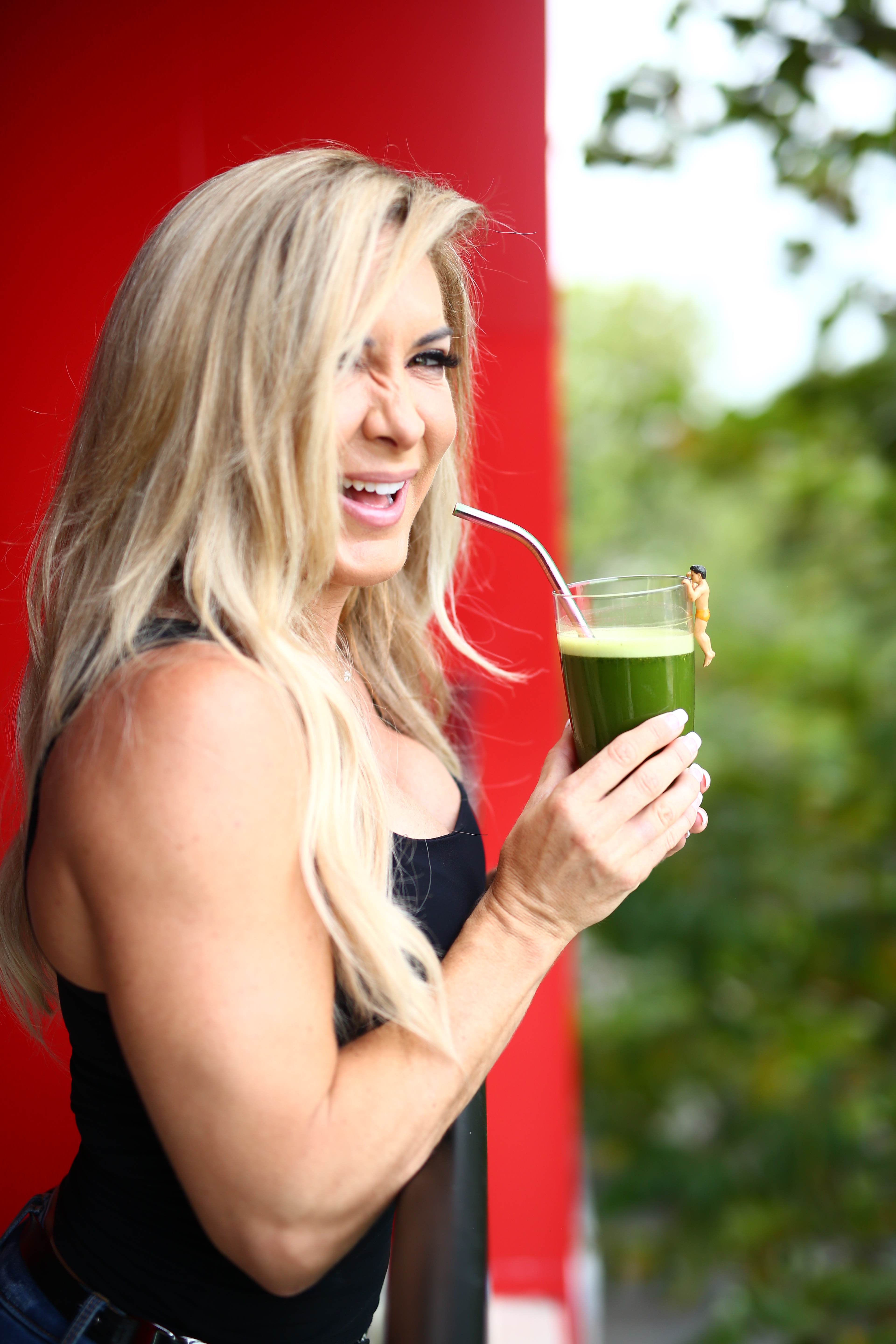BLENDING VS JUICING
I start every day with an energizing green-based blended juice and love how energized I feel. I also have less sugar cravings, stay fuller longer between meals, have regular bowel movements and my skin radiates when I’m consistent with my juicing. But to ‘blend’ or ‘juice’ is the question?
It’s well-established that increasing your intake of fruits and vegetables is good for you. A review of studies has shown multiple health benefits. Two that particularly stand out to me are that eating five or more servings of fruits and vegetables a day can decrease the risk of stroke by 25% and that the antioxidants in fruit and vegetable juices may play an important role in delaying the onset of Alzheimer’s disease. The more fruits and vegetables you consume, the greater the benefits! But it can be difficult for some people to consume the recommended five or more servings in one day. Juicing or blending fruits and vegetables into smoothies can be one easy way to get your daily servings in. So we want to juice daily BUT with all the fancy juicers and blenders in the stores today choosing the right equipment can be really overwhelming. What’s the difference? And what kind of equipment do you need for each one?
What is blending?
In blending, you take whole pieces of fruit and vegetables and chop it up to a desired consistency. Everything that enters the blender ends up in the final mixture, like a smoothie. The fiber and antioxidants in the skin of the fruits and veggies gets ADDED to the final product. You’ll want to use a minimum of a 900 watt motor and I recommend Ninja Pro Blender, KitchenAid Torrent Magnetic Drive Blender (amazing preset program that makes the perfect consistency every time) or a Vitamix.
What is juicing?
Juicing is the process of extracting juices from any fruit and vegetables. After juicing you’re left with a thin and concentrated liquid product that contains vitamins, minerals, and other phytonutrients; which are bioactive plant-derived compounds associated with positive health effects. And you’ll also have all the solid parts of your ingredients leftover (the fiber and many of the antioxidants found in skin and seeds). If you WANT a low-fiber diet, juicing may be a better option for you and you specifically need a juicer to do this. Juicing can be a bit more expensive as you have to use a greater volume of produce. For example: about 2 oranges, 1 stem of kale, ½ red pepper, 1 cup berries and 1 stalk broccoli will make about one cup of juice but about three cups of smoothie. If you’re juicing it’s important to note that the portion size of juice should be smaller than a blended beverage. Otherwise you’ll have too much sugar in that cup of juice. Natural sugars like fructose aren’t the enemy but too much fructose will be stored as fat. Fructose is absorbed through the intestine via different mechanisms than glucose. So unlike glucose, fructose does not stimulate a substantial insulin release. Once fructose is in the liver, it can provide glycerol, the backbone of triglycerides (fat), and increase fat formation. I recommend Breville juicer as I have had one for over five years without any issues.
Why do I prefer blending?
I chose to blend as my goal is to add as many micronutrients, antioxidants and as much fiber as possible which helps me feel fuller and improves digestive health. I also like that I can add other types of foods to smoothies like nuts, seeds, avocados and greek yogurt to increase my intake of healthy protein and fats (meal replacement). This drink will be thicker and may take some time to get used to.
What is best for you?
Either process can help you to increase your fruit and vegetable intake and create less waste in the kitchen.
Some of my tips for juicing and/or blending:
- To prevent excess sugars, limit the fruit in both juices and smoothies to 1-2 servings per drink (i.e. ½ cup fruit max).
- Green veggies like kale, spinach, parsley, celery and cabbage surprisingly do not taste very intense in smoothies or juice, so load up on those!
- Citrus and lime juice in particular, can help to cut out any bitter taste from vegetables (remember to remove the peels)
- Juicing high water content vegetables like cucumbers and celery will help to add volume and nutrients
- When blending smoothies add regular or coconut water to make it less pulpy
- Always wash all your fruits & vegetables with a wash or light vinegar and water
- You get what you pay for when buying a juicer or a blender: the current products claiming to have benefits over other standard blenders tend to have higher horsepower as I mentioned above.
Try my favorite Go-to Green Juice!
YOU WILL NEED (7 INGREDIENTS)
2 cups packed baby spinach leaves
Handful parsley leaves and stems
1 medium green or red apple, rinsed with core removed
1 large seedless cucumber, rinsed
1-inch length piece fresh ginger, scrubbed clean OR 1 tbsp Ground Ginger
1 medium lemon or lime
1 scoop @zhou_nutrition Spirulina
Try it and I guarantee you’ll be hooked on the goodness that you feel. Happy blending and juicing!




